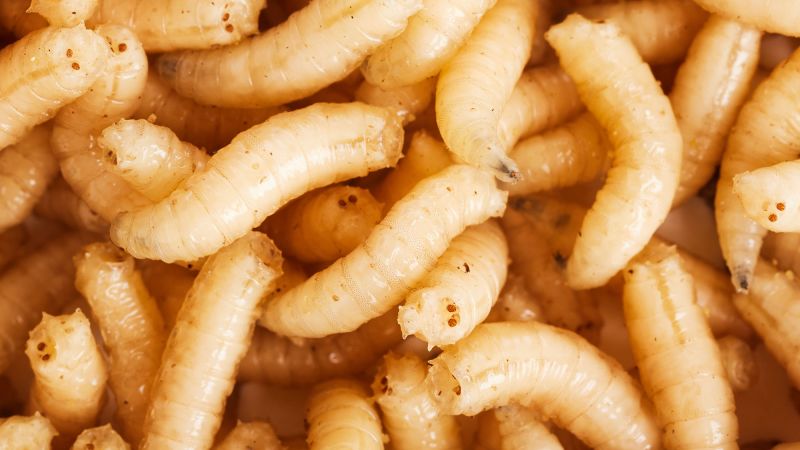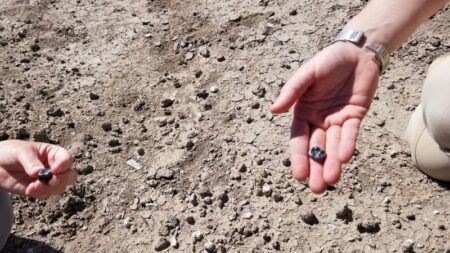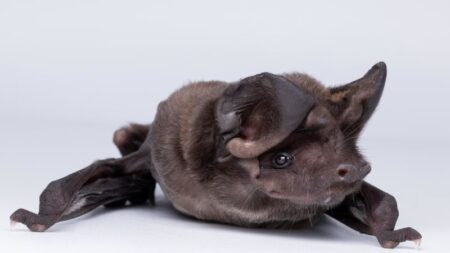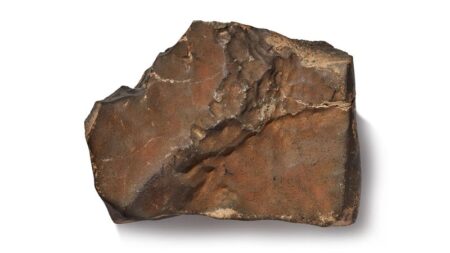Neanderthals, a species that roamed the Earth thousands of years ago, have long been perceived as dedicated hunters, focusing primarily on large game such as woolly mammoths. This stereotype, which characterized them as ferocious meat-eaters, was supported by specific archaeological evidence. However, recent research has shifted this understanding, suggesting that Neanderthals had a far more diverse diet, incorporating not only meat but also pulses, shellfish, and even unconventional sources of nutrition such as maggots. This unexpected dietary insight comes courtesy of a study published in the journal *Science Advances*, which offers a fascinating glimpse into the complex food preferences of our ancient relatives.
The pivotal research led by Melanie Beasley, an assistant professor at Purdue University, reveals that the chemical signatures found in Neanderthal bones hint at a previously overlooked component of their diet. The study proposes that maggots, the larvae of flies that thrive on decaying flesh, may have constituted a significant food source for Neanderthals. This striking hypothesis aligns with ideas previously posited by John Speth, a co-author and anthropologist at the University of Michigan, who suggested that putrid meat, often teeming with maggots, was an acceptable and even essential part of the diets of prehistoric peoples. Ethnographic studies of various contemporary indigenous cultures indicated that these communities often viewed rotten meat and its larval inhabitants as valuable sources of nutrition.
Understanding past diets is a challenging endeavor for researchers, who utilize isotopic analysis to trace the dietary habits of ancient populations. By studying different isotopes, particularly nitrogen and carbon, preserved within human and animal bones, scientists can glean insights into the positions of these creatures in ancient food webs. Initial findings in the 1990s highlighted elevated levels of nitrogen-15 isotopes in Neanderthal remains, indicating meat consumption akin to hypercarnivores like lions and wolves. However, modern human bodies cannot efficiently metabolize large quantities of lean meat, leading to confusion over how Neanderthals managed their nitrogen levels.
Typically, overconsumption of lean meat can result in a condition known as protein poisoning. Histories of European explorers in North America note that this ailment, termed “mal de caribou” or “rabbit poisoning,” occurred when lean game was overconsumed. According to Speth’s research, Neanderthals may have consumed rotten meat high in nitrogen to maintain balance and avoid malnutrition. This framework now opens the possibility that maggots played a role in their diet, as these larvae may have provided additional nitrogen and nutrient density.
In her experimental work, Beasley observed nitrogen levels in human diasporas at the Forensic Anthropology Center in Knoxville, where decomposing tissue supported her hypothesis. Through rigorous analysis over two years, she discovered that maggot larvae harbored significantly higher nitrogen levels compared to rotting meat, suggesting that Neanderthals and even early modern humans regularly ingested insect-laden flesh.
Prominent scholars, such as Karen Hardy from the University of Glasgow, acknowledge that while the authors of the study present compelling evidence for maggot consumption, concrete archaeological proof remains elusive due to the perishable nature of larvae in ancient contexts. Furthermore, Hardy points out that cultural biases shape our perceptions of edibility, which might constrain our understanding of ancient diets.
Interestingly, the current human context serves as a reminder of the ongoing acceptance of insect consumption across various global cultures. At least 2 billion individuals today regularly consume insects, recognizing them as nutritious food rather than mere survival rations. This historical perspective mirrors the practices of indigenous groups, including the Inuit, who have historically viewed overripe, maggot-infested animal products as delicacies.
Overall, Beasley’s research reverberates with ancient texts as well. Knud Rasmussen, a famed explorer, documented the consumption of maggots by Inuit people in his 1931 exploration of their culinary practices. Despite the challenges of modern palates confronting the idea of consuming maggots, culinary traditions around the world demonstrate that such practices still persist.
While Beasley’s explorations encountered limitations—such as focusing solely on human tissue and the possibility that the studied fly larvae differ from those in the late Pleistocene—the study has reinvigorated interest in understanding prehistoric diets. By investigating traditional food processing methods among contemporary groups in Alaska, Beasley aims to connect past and present nutritional practices, offering a deeper understanding of humanity’s culinary legacy.
The implications of this research offer a “refreshing perspective” on our ancient ancestors’ diets, as noted by Wil Roebroeks, a knowledgeable figure in paleolithic archaeology. Through this lens, Neanderthals emerge not merely as primal hunters but as complex beings with varied and possibly intricate food traditions that included an appreciation for the often unconsidered contributions of maggots in their diets.












